A City in Colorado Switches from Paper Forms to Esri Technology to Document Sign Code Violations and Abandoned Shopping Carts
Like every community, Thornton, Colorado, sees its share of code violations that run afoul of city rules that regulate temporary signs and junk and debris: A real estate agent places an open house sign in a highway median. A cat goes missing and its owner nails flyers with the feline’s photo into utility poles. A shopper abandons a cart from a grocery store in a city parking lot.
Sooner or later, code compliance supervisor Mike Hankinson or a member of his team will come along and remove any signs that violate the City of Thornton’s sign code, which forbids placing temporary signs on poles, in medians, or near curbs and intersections. They also will haul away shopping carts abandoned on city property, including right of ways, because the carts are considered junk or debris.
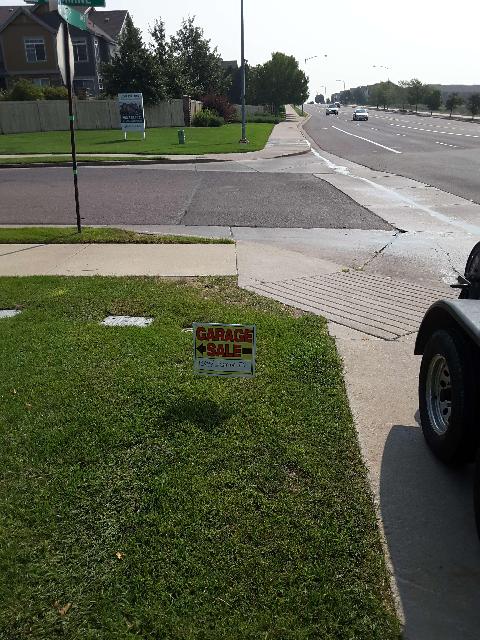
But before taking down the signs or picking up the carts, the code compliance officers record violations using a new digital workflow based on Esri technology. This year, the City of Thornton got rid of paper forms in favor of using two Esri apps: Survey123 for ArcGIS to document illegally placed signs abandoned shopping carts and homeless encampments, and Operations Dashboard for ArcGIS to help staff analyze and visualize the data so that they can answer questions and spot trends. Both Survey123 and Operations Dashboard are configurable apps that come with ArcGIS Online organizational accounts.
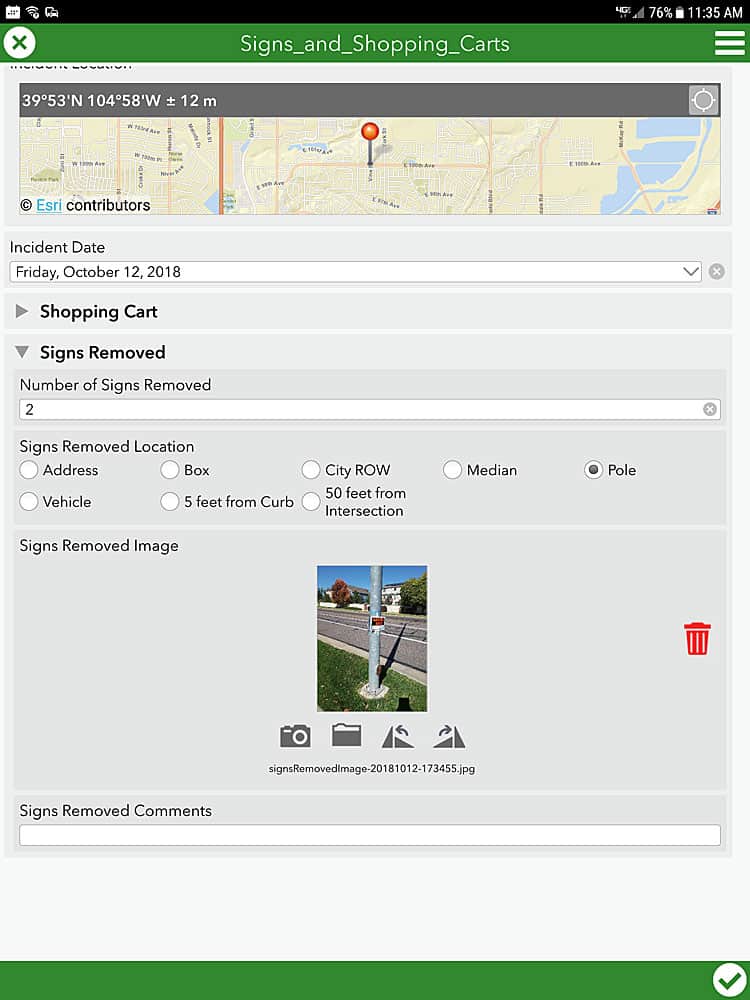
The technology gives the city the ability to quickly record, transmit, and analyze data about sign violations and abandoned shopping carts—two issues of that have been of concern to the City Council due to complaints from residents, property owners, and local businesses. City staff and officials now get geographic insight into problems and can see patterns that would have been difficult to ascertain using paper forms and spreadsheets, according to Jeff Coder, deputy city manager of City Development in Thornton. “We can identify the problem, quantify the problem, and locate the problem and see trends,” he said.
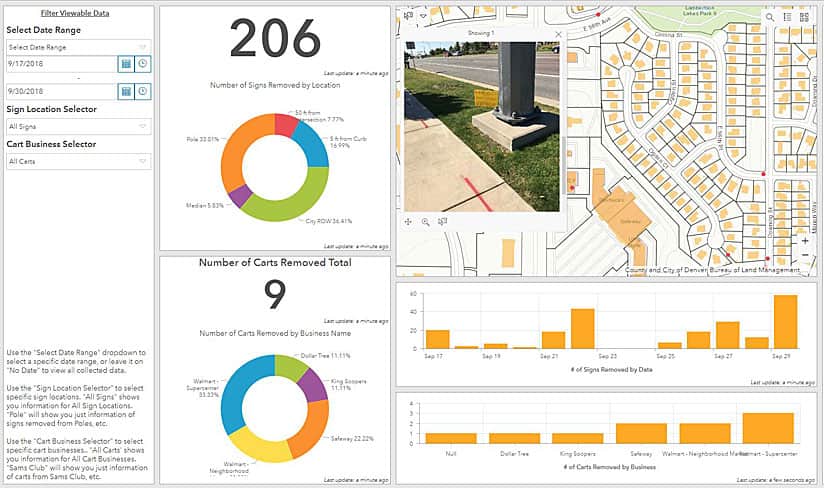
Two Apps, One View of Information
How does Survey123 for ArcGIS work in tandem with Operations Dashboard for ArcGIS for the City of Thornton?
When a sign code violation occurs, for example, the compliance officer on the scene opens a Survey123 form on a city-issued Samsung tablet or Apple iPhone to collect pertinent data. The location is immediately autopopulated, using the device’s GPS.
“A map pops open,” said Tyler Dunn, the GIS developer for the City of Thornton who configured the Survey123 and Operations Dashboard apps for the project.
The device displays the latitude-longitude coordinates of the incident. Also, the date and time are automatically logged via the device’s GPS.
Using the Survey123 Connect for ArcGIS desktop tool for creating surveys, Dunn made a simple questionnaire for the code compliance officers to fill out. The officers type in the number of signs removed, click one of the check boxes indicating the sign location (e.g., median, pole, utility box, or city right-of-way), upload a photo of the sign(s), and add comments about the violation.
And that’s it.
“We wanted something that was quick and easy to use,” Dunn said.
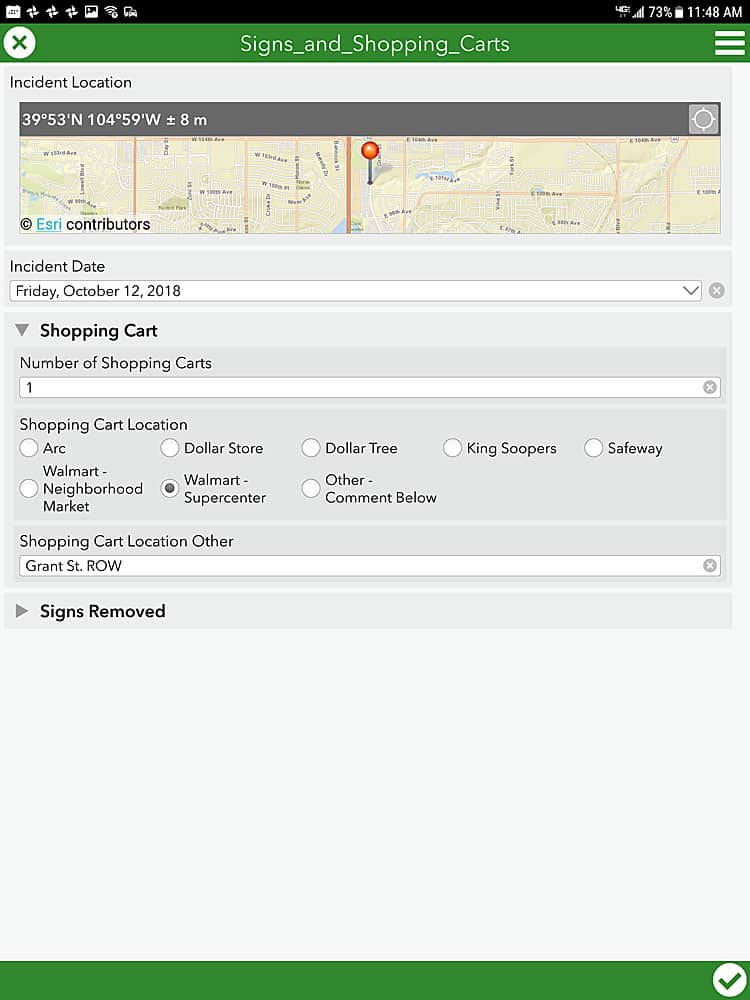
Code compliance officers use a similar Survey123 for ArcGIS form—which Dunn configured in a few minutes—to document information about abandoned shopping carts in the city.
The officers collect information including where and when each cart was found; whether it was on private or public property; and which store it came from, such as Sam’s Club, Walmart Supercenter, Dollar Tree, or Safeway. “We annotate whether the cart was [later] removed or not,” Hankinson said. “If not, then the officer will contact the owner of the cart and have them remove it.”
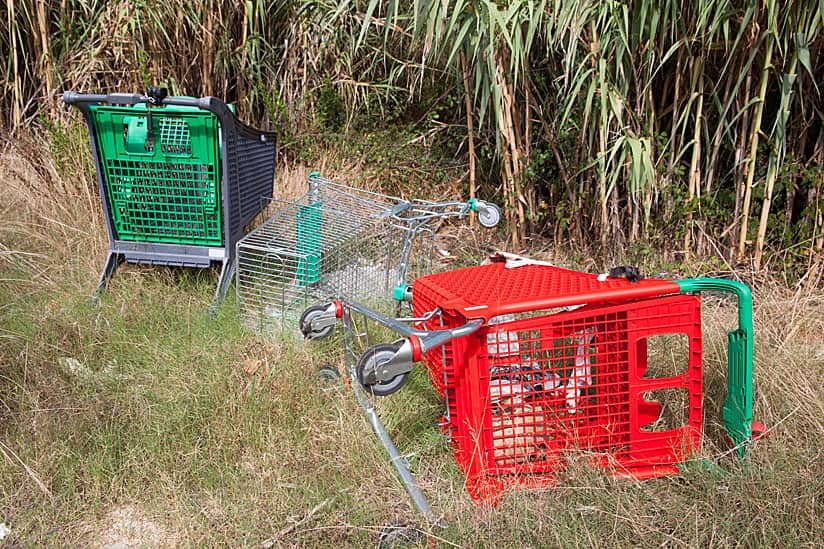
Incident information about the signs and carts is instantly sent to ArcGIS Online and appears in real time in Operations Dashboard for ArcGIS. The dashboard displays the following:
- A map that shows where the signs and carts were found
- The number of signs and carts that were removed
- Photographs of the signs
- A pie chart that shows the percentages of where the illegal signs were found by location (e.g., pole, city right-of-way, within 50 feet of intersection)
- A second pie chart that breaks down the percentages of abandoned shopping carts by original location (e.g., Safeway, Walmart Supercenter, King Soopers)
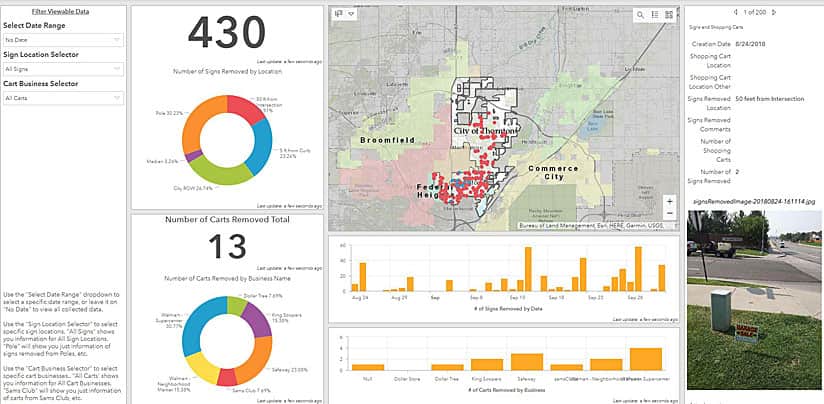
Dunn configured the dashboard to give users the ability to filter the data by a range of dates, if necessary. Users also can filter the cart data by store name, or the sign data by where the signs were found—near curbs, in medians, or on poles, for example.
The dashboard gives city staff the ability to quickly and easily answer code compliance-related questions posed by city council members and residents.
Hankinson, for example, might receive a complaint questioning why a specific sign was removed by a code compliance officer. Using the dashboard, he can retrieve the incident report, share a photo of the sign with the complainant, and explain why the sign failed to comply with the city code.
The Survey123 for ArcGIS app provides stronger and more accurate documentation than the paper forms did, since the location of the sign violation is accurately mapped, and a photo is now snapped, Hankinson said. Whether using a paper form or the Survey123 app, the workflow is generally the same.
“But the accuracy and tracking [with the app are] superior,” Hankinson said. “It is a lot more efficient . . . and supports what we are doing. It provides immediate information on when, where, and why a sign was pulled. We then know who pulled the sign and explain to the resident why it was in violation of the sign code. It is a—by far—more efficient means of collecting and analyzing information to ensure we are addressing these violations correctly and in a timely manner.”

City council members also occasionally request information after getting calls from constituents reporting a proliferation of abandoned carts or illegal signs on their private property.
“This application was born from those kinds of questions,” Coder said.
With each location of an illegal sign or abandoned cart symbolized as a point on the dashboard map, city staff can instantly see which neighborhoods are experiencing these types of problems.
In the case of the errant carts, the City of Thornton’s staff can contact the stores and tell them where their carts are being abandoned. That will help store managers be more strategic when sending their employees to search for and collect carts, Coder said. “[They will] know where to look,” he said.
Since starting to monitor the number of abandoned carts and notifying the stores as to their locations late last summer, the number of abandoned carts being found by code compliance officers has dropped significantly.
“Several stores have begun to conduct bi-weekly sweeps for their carts left on neighboring properties and apartment complexes,” Hankinson said.
Easy to Develop, Easy to Use
Survey123 for ArcGIS and Operations Dashboard for ArcGIS were both easy to configure, Dunn said. Each Survey123 questionnaire was built in about 20 minutes, and Operations Dashboard was set up in two days.
GIS developers often like to build their own custom apps, but Dunn liked working with the configurable apps from Esri. “With a cool out-of-the-box solution, it is quick and easy to set up,” he said.
Dunn said he used his development skills to tie Survey123 and Operations Dashboard together.
The code compliance officers, who were trained to use Survey123 on their Samsung tablets and iPhones in two days, gave the app a big thumbs-up. Asked for their feedback on using Suvery123 for ArcGIS, the officers said they were happy to eliminate the paperwork associated with the forms they once filled out by hand. They also like being able to lock in the coordinates of a violation and take pictures to document their work.

“A Culture of Innovation”
The City of Thornton has just begun using Collector for ArcGIS and Operations Dashboard for ArcGIS to track the locations of homeless encampments and the number of people living at the sites, Hankinson said. The city requires debris at the sites to be removed within certain time periods (e.g., 24 hours on public property), and the GIS technology helps monitor all the enforcement activities.
The city’s GIS manager, Brandi Rank, said that the city will continue to go digital with its processes. “We can leverage the use of real-time data collection, standardize [data] collection, and transition from paper to an electronic system. The reports are now [automatically] done for us. We are now setting the stage to be early adopters of new innovations and technology. These small steps play into creating a culture of innovation.”
Coder agrees.
“City staff accomplished an amazing improvement and enhancement to our code compliance service levels in these areas using Survey123 and Operations Dashboard,” he said. “Anytime that you can convert a manual, cumbersome work process to a more efficient and accurate automated process, it is clearly a success. However, when the improved process enables location- and type-specific trend analysis and problem diagnosis with graphic and quantitative displays, the success is elevated to innovation status.”

